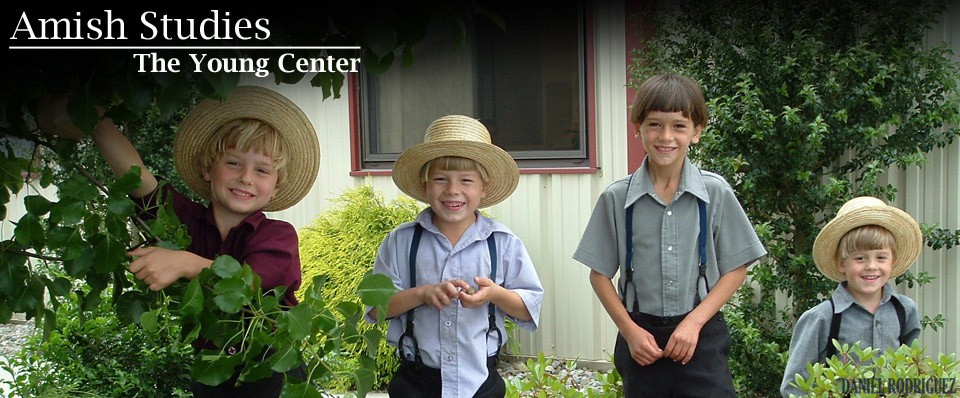Regulations
Biblical principles are applied in daily practice through the Ordnung, a German word that means “order.” The Ordnung consists of district-specific regulations, usually unwritten, that are passed on by practice and oral tradition. The regulations apply the biblical principle of separation from the world to issues such as clothing, use of mass media, technology, and leisure activities. The regulations both proscribe and prescribe appropriate behavior.
As part of their Ordnung, Old Order Amish forbid owning automobiles; tapping electricity from public utility lines; owning televisions, radios, or personal computers; attending high school or college; joining the military; and initiating divorce.
All Amish groups expect men and women to wear prescribed clothing. Married men are expected to grow a beard but not a mustache, and to wear an Amish-style hat and vest. Women are expected to wear a head covering and, usually, a three-piece dress that includes a cape and an apron. Unlike the broader American culture, where dress is often used to express personal preferences, dress among the Amish signals submission to the collective order and serves as a public symbol of group identity.
The Ordnung discourages members from joining public organizations or service clubs in their communities. Some of them, however, are members of local volunteer fire companies and emergency medical units.
Members agree to obey the Ordnung at the time of baptism, with the clear understanding that they will be subject to church discipline, and perhaps excommunication, if they break that vow.
Church leaders update the regulations as new issues arise, usually with input from district members. Controversial issues—the use of cell phones, computers, fancy furniture, or immodest dress—receive attention at members’ meetings. Disagreements over the details of the Ordnung can sometimes become contentious. Members of each congregation affirm their district’s Ordnung twice a year, before the spring and fall communion services.
******
The Amish have learned to live with limits. Indeed, they would argue that setting and respecting limits on almost everything is one of the foundations of wisdom. Limits, for the Amish, are a requirement for happiness. Without limits, they believe, individuals become arrogant, conceited, and self-destructive. To be sure, restraints diminish individual freedom, personal choices, and various forms of self-expression. At the same time, some would say, they grant greater dignity and security to the individual than the endless choices afforded by modern life. To the Amish way of thinking, a respect for limits builds community, brings a sense of belonging, and shapes identity—three important keys to human satisfaction and happiness.
Additional information
- See pp. 69-70 in chapter 4, “Religious Roots,” p. 85 in chapter 5, “Sacred Rituals,” pp. 118-21 in chapter 7, “Symbols and Identity,” and pp. 297-98 in chapter 16, “Business,” in Donald B. Kraybill, Karen M. Johnson-Weiner, and Steven M. Nolt, The Amish (Baltimore: Johns Hopkins University Press, 2013).
- See chapter 5, “Rites of Redemption and Purification,” in Donald B. Kraybill, The Riddle of Amish Culture, 2nd ed. (Baltimore: Johns Hopkins University Press, 2001).
- See chapter 3, “Ordnung,” in Steven M. Nolt and Thomas J. Meyers, Plain Diversity: Amish Cultures and Identities (Baltimore: Johns Hopkins University Press, 2007).
- Stephen E. Scott, Why Do They Dress That Way? rev. ed. (Intercourse, PA: Good Books, 1997).
- Stephen E. Scott, Plain Buggies: Amish, Mennonite and Brethren Horse-Drawn Transportation, rev. ed. (Intercourse, PA: Good Books, 1998).
